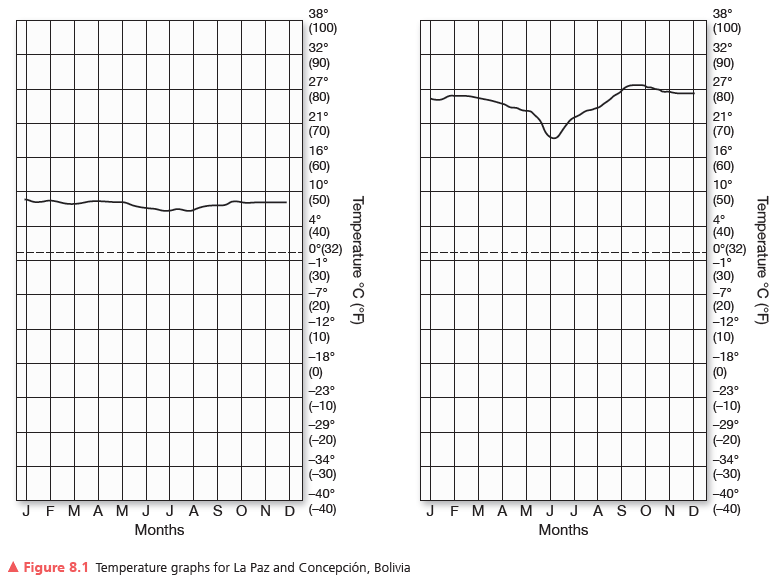The annual march of the seasons and the passage of the subsolar point between the Tropics of Cancer and Capricorn affect these stations. Can you detect from your temperature graphs these seasonal effects? Explain.

Both stations show slight winter (June and July) cooling as the Sun moves to the northern hemisphere. Temperatures indicate two annual passages of the Sun’s overhead rays (90° solar altitude).
You might also like to view...
According to the text, technological and industrial innovations now make the urbanization process reversible
Indicate whether this statement is true or false.
Make sketches to show the structure of a mature hurricane as it appears from the side and from above. Indicate and label the major features.
What will be an ideal response?
A theory is a simplification of the world
Indicate whether the statement is true or false
Which statement is true of an equinox?
a. The hours of daylight and darkness are exactly the same all over Earth. b. Daylight is longer than darkness over the Northern Hemisphere. c. Darkness is longer than daylight over the Northern Hemisphere. d. The hours of daylight and darkness in each hemisphere vary according to the local season.